Installing lighting in the backyard of a country house
Lighting the yard is an important task, because it affects not only the appearance of the site, but also the safety of movement in the dark. To do the job properly and create a reliable system, you need to choose lighting equipment and place it in the right places. You also need to understand the peculiarities of lighting fixtures to avoid electrocution of people and pets.
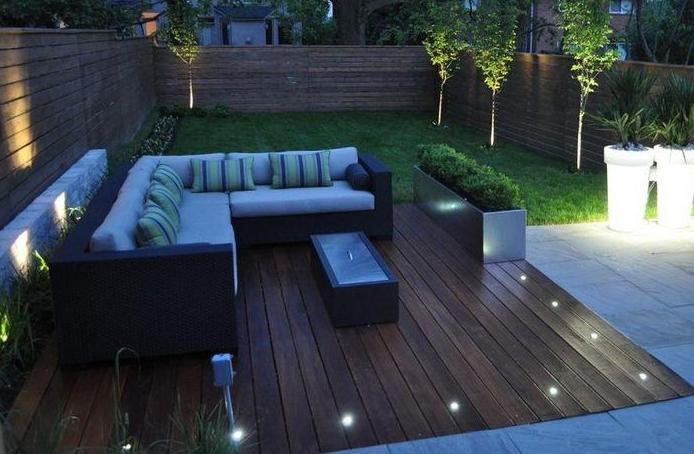
The functions of lighting and its requirements
Before selecting equipment and planning its location on the site, it is worth thinking about what functions it should perform. There are options:
- Technical lighting. Has a utilitarian purpose and should provide good visibility wherever it is necessary. First of all, this applies to the entrance of the house, the area for parking, the place near the entrance gate. It is also worth well illuminate arbors, playgrounds, paths near ponds and other dangerous objects.
- Decorative lighting. With its help, you can create a comfortable atmosphere on the site, most often use a soft, diffused light. Used both traditional lights, and special lighting, which can highlight plants, flowerbeds, alpine hills, ponds, improvised fountains, etc. Here can also be used LED strip or special garlands for street lighting.
- Protection against thieves. Intruders are unlikely to break into a well-lit area that can be seen far away. And to further increase security, you can hook up motion sensors that will go off when someone walks through the yard. They're great for scaring away uninvited guests.
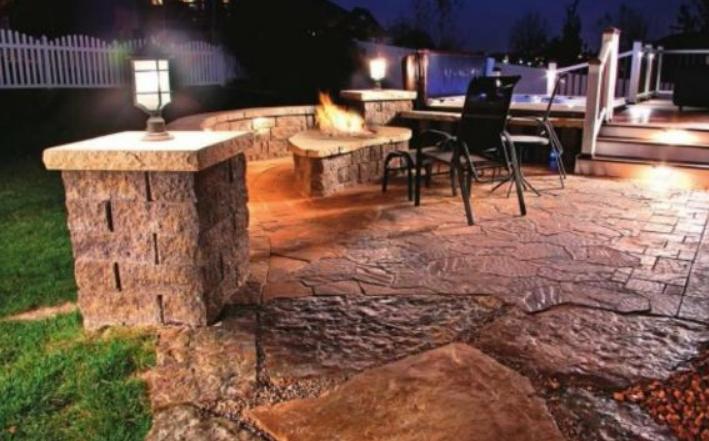
The lighting system can perform either one or more tasks. It all depends on the characteristics of the site and the equipment used.
Before choosing, you need to make sure that it meets the basic requirements:
- Ergonomics. The light should provide a comfortable environment, not strike the eyes and not force to stare. It is important to think in advance about how best to zone the space and which areas need to emphasize the most. When planning facade lighting choose models that will not shine into the windows and interfere with rest.
- Conformity with the overall design of the garden plot. Choose types of lights that will fit in the overall environment and look good. For an ornate design, strict equipment will do, and for a yard in a minimalist style, it is better to buy unusual models. You can combine lighting with decoration and buy figurines with built-in lanterns.
- Economical use of electricity. Putting lights that are constantly on, even if no one is on the site, is not the best solution. In this case, you need to use motion sensors or turn on manually, so that the light works only when you need it. It is also very important to choose lights with economical bulbs, due to this you can reduce the consumption of electricity for lighting the site by several times.
- Ease of maintenance and safety of the system. It is worth using equipment specifically designed for open air and with a long service life. If the lamps are replaceable, they should be easy to change when necessary.
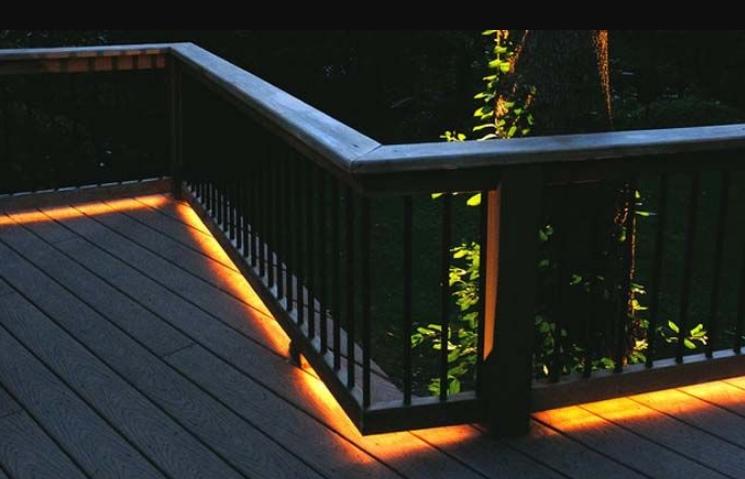
Select models with protection against dust and moisture penetration. There should be an indication on the packaging or in the instructions that the lights can be installed outdoors.
Types of garden lights
Here it all depends on the place of use and the requirements that are placed on the lights. For convenience, it is worth dividing all options into several groups, depending on where they will be installed.
Garden paths
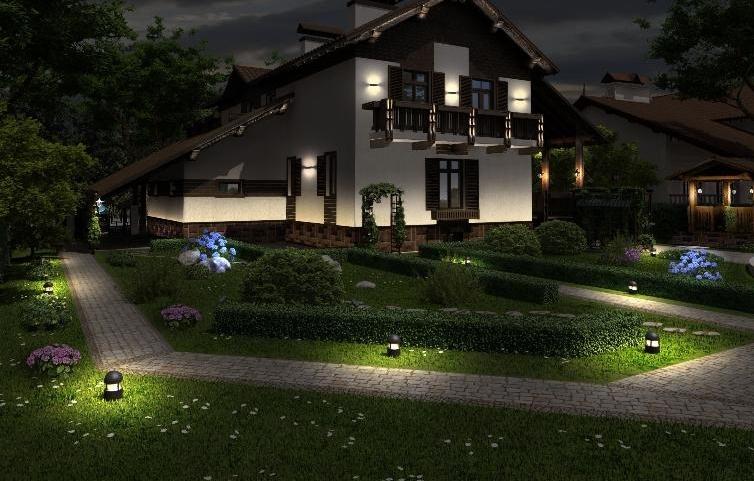
The main requirement is to ensure visibility when moving. At the same time, the light should not be too bright, so it is best to use such models:
- Built-in lights that distribute light over the surface of the paving tiles themselves. A simple solution that looks spectacular and provides good visibility on the path, while not illuminating the surrounding area.
- Bollards and models in the form of low posts, which diffuse the light around by means of a frosted glass insert. They are suitable for paths and for the carport to mark the boundaries of the parking space in the dark.
- Mid-height floor lamp type fixtures. Used on wide walkways. Usually equipped with frosted glass or plastic diffuser. Or a canopy is used, distributing light at a low height.
- Options in the form of paving tiles or curb elements. An unusual solution that can be laid in some parts of the path or along the edge to provide soft lighting for the pedestrian area. Select variants of the right size so that the pavement looks uniform.
Track lighting can be included separately from other options if the seating area is located behind the house and is not used often.
Entrance and porch
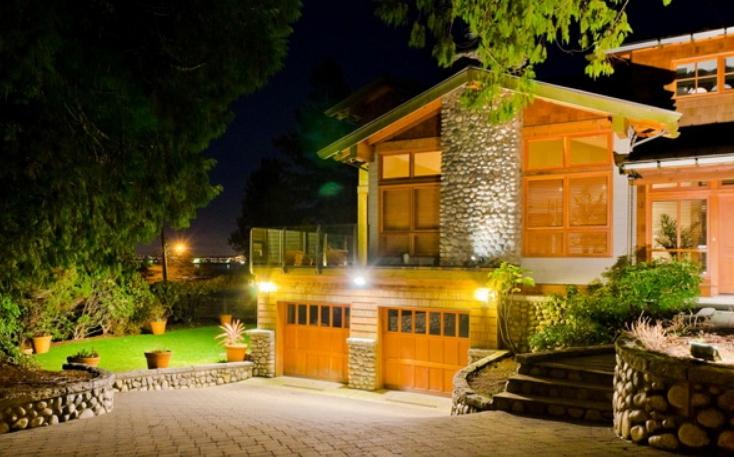
It is necessary to think well about how to light the gate or gate and the area near the porch to ensure good visibility. Here you can use different lights:
- Suspended models, they can be mounted on walls, specially installed supports and other structures. Use diffused light fixtures that create a calm atmosphere and do not use cold-colored lamps.
- Use low-height fixtures along the aisle, on the edges of the porch, or on bases. Select the location so that the space is illuminated evenly.
- Built-in models, they can be placed in the steps, at the edges of paths and other suitable places. The design can vary and depends on the method of installation.
- High lanterns of the classical type with a plafond at a height of 2-3 m. Well illuminate a large space.
To make the light come on when the gate or gate is opened, it is better to put a motion sensor.
Rest area
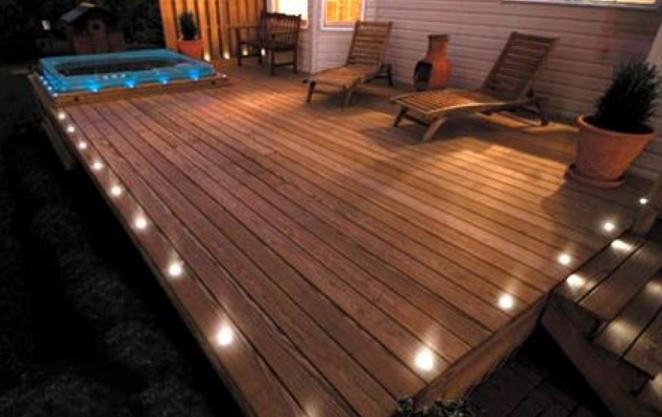
This can be gazebos, patios, outdoor areas with benches and other objects. In such cases, the most commonly used:
- Pendant lights that illuminate a specific space and make it stand out from the general background. There are many options, you need to choose according to the style and power of the lamp.
- LED strips and special garlands for street lighting. With their help, you can not only illuminate the space, but also create a festive atmosphere.
- Small lights mounted on banisters or small elevations. Gives a soft diffused light, the number of selected depending on the area to be illuminated.
- Classic medium-height lanterns. They can be both with plafonds and with a directed flow of light.
Choose lights for the resting place should be selected with regard to what will be engaged there. A dimmed light is enough for conversations, for games or crafts you need brighter options.
Decorative lighting
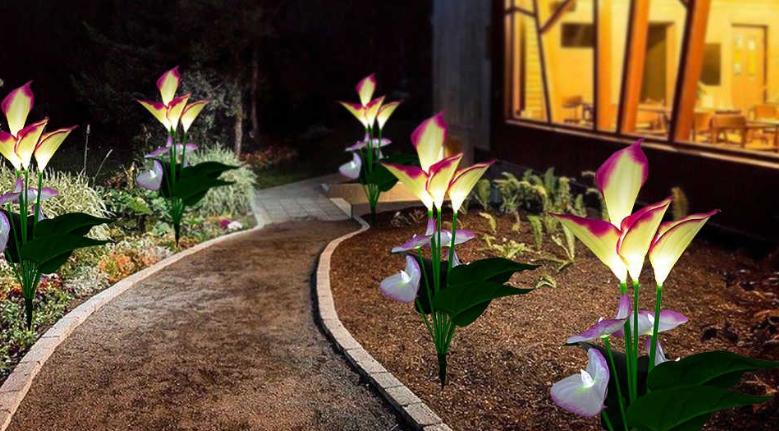
To highlight plants, alpine hills or flowerbeds, pergolas, ponds and other objects, decorative lighting is used. Most often it is made with the use of the following lights:
- Floodlights of different sizes and types that highlight a single object and concentrate attention on it. They are convenient because the light flux can be adjusted in different ways.
- It is possible to use illumination on the shore or install underwater lights for the pool. Another interesting option is floating lights, installed on special stands of foam plastic.
- Various figures or Japanese stone lanterns are also well suited for decorative lighting. The products serve as a decoration during the day and provide illumination at night.
- Various ribbons and garlands can also be used. They are hung on trees, placed along pergolas, etc.
Small spotlights can also be used to show off particular bushes or plants.
Facade lighting
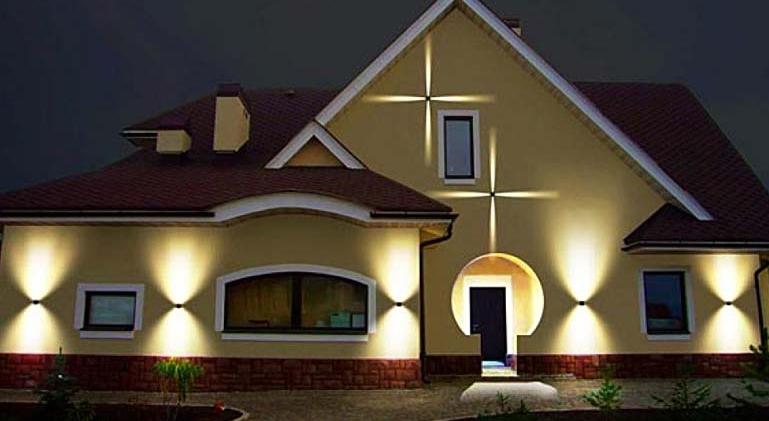
Another important part of site lighting. With facade lighting is not difficult to highlight the building, make it more attractive. At the same time improving visibility in the yard. Most often these lights are used:
- Concealed light models, in which the flow is directed to one or more sides due to the reflector. Mounted on the wall, they highlight individual parts or create effects to decorate the facade.
- Surface-mounted and recessed variants. Illuminate a certain area or separate elements of the construction - roof slope, window apertures, decorative elements.
- Projectors. They are used for floodlighting so the whole facade is visible. They are installed both on the wall and at a distance from the house.
- Ribbons and garlands. With their help, you can highlight the contours of the private house or make the framing of the entrance structure, windows, etc.
You can install LED ribbons or lights and set up shimmering lighting of the facade.
Backyard lighting planning
Without a clear plan, you should not do a light in the yard, as you will inevitably have to redo something or make changes. In addition, without preparation, it is impossible to buy everything you need. Therefore, it is necessary to follow a simple guideline:
- Consider the location and type of lights that will be used. First, simply walk around the site and make a list of all the equipment and where to install it.
- Draw a diagram of the site. You can copy it from the project, or you can just mark on a piece of paper the boundaries of the yard and the location of all buildings, paths and other objects.
- Determine where the cable will be connected and how best to lead it out of the house. Most often connected to the switchboard, while putting a separate circuit breaker for the street light, so if necessary to turn it off during repair and maintenance.
- Mark on the plan all the lights. Calculate how much cable and other accessories you will need, always give a small reserve, since the actual consumption is often more than planned.
- Purchase everything you will need for the job. Also, do not forget about the tools that will be needed.
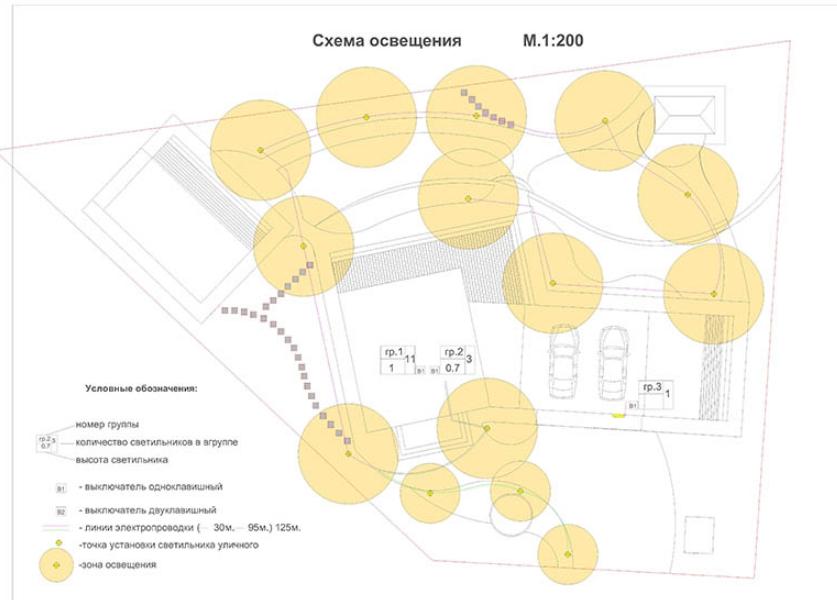
If a cable will be laid, then all the lines must be made in the project.
What type of lamps is better to choose
In order to provide good light and reduce the consumption of electricity to a minimum, you need to choose the best type of lamps. There are several basic options:
- Incandescent bulbs should not be put in street lights. Although they are cheap, but they do not last long, get very hot when working and do not give light of the desired intensity.
- Halogen lamps in quality of light is much better, but they are also not durable. They are very hot and use a lot of electricity.
- Fluorescent The power consumption options are much better than the first two types. They give good light, but do not tolerate changes in temperature and humidity, so you need to install them in sealed plafonds.
- LED bulbs LED bulbs are the most economical today. Their lifespan is 50,000 hours, which is much longer than any other analogue. You can select the color temperature and adjust the brightness.
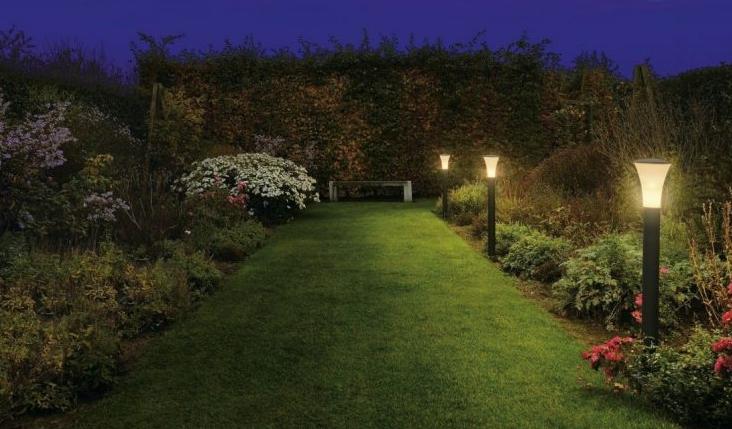
LED systems can be set to dim lights at times when everyone is asleep to save even more electricity.
Tips for choosing street lighting from Portal
Ways to control street lighting
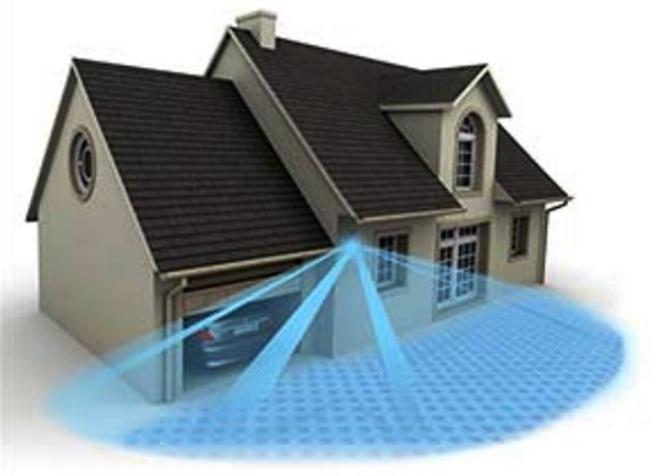
There are several options for turning lights on and off on a property. Each of them has its pros and cons, so it is better to choose according to the situation. You can also use combined solutions to change the on and off mode if necessary. Main types:
- Manual control.. Most often make a separate automaton for each type of light, so that you can turn on what you need. A simple system that is suitable for those who are on the country site infrequently and turn on the lights only occasionally.
- Light-sensitive element. It is usually a transistor that is triggered when the light level falls below normal. This is when the light turns on. The backlight is switched off at dawn. The system is autonomous, you can use one general photocell to turn on or several separate ones.
- Astronomical relay. An interesting solution in which you must first enter the coordinates of the location of the site, and the device itself will calculate the periods of switching on and off for each day based on the time of sunrise and sunset. In addition, you can set this option to not turn the lights on if no one is home.
- Time relays - Another convenient solution, they can be set to turn on and off times. There is also a comfort light mode whereby after the lights are turned on manually, they will automatically turn off after 5 or 10 minutes, which is very convenient for an entryway system or car entrance.
- Motion sensors allow you to turn the lights on only if someone is on the property. This option is especially convenient where you don't need a permanent light. To connect it is not difficult - you need to choose a place and install the sensor so that its working part was directed to the desired segment of the yard. It is better to connect to the sensor not the entire system, but 1-2 lights. After installation, adjust the sensitivity so that it will not work on small animals and birds.
It is better to combine different options to achieve the right on and off mode for each type of light.
Video: Controlling lighting from your smartphone
Stages of installing lighting in the yard of the house
To do the work on your own it is necessary to follow the instructions, because if you do not follow the recommendations, there is a risk of electrocution of people and animals. Remember the following:
- Before starting work, turn off the power supply to prevent injury. Install a separate circuit breaker in the instrument panel, the power must be chosen according to the equipment. Lead the cable out of the house by any convenient means, preferably to do it underground.
- It is best to use the underground method of laying cable, it is safer and the view of the site is not spoiled. It is necessary to dig a trench with a depth of 90 cm to all the fixtures. At the bottom of the poured cushion of crushed stone thickness of 20 cm, on top of the cable is laid, which is placed in a corrugated sleeve and HDPE pipe to protect against any influences.
- It is best to solder the cable joints to improve contact and protect against oxidation. Then heat shrink tubing is put on to seal the joint tightly. On each lead, leave a margin of length to make it easy to connect.
- When backfilling the trench, it is better to put a signal tape at a depth of half a meter. If excavation work will be done later, you will not have to guess where the cable lies - if you get a tape, it means it is under it.
- Installation of lighting fixtures depends on their design and installation method provided by the manufacturer. Most often drill holes for anchors in the tile or other base. Or you will need to pour platforms of concrete for installation. There are options that you just have to stick in the ground, which is convenient and does not require preparation. Suspended models need to be secured so that they do not fall.
- To connect the wiring, use sealed connectors. Or solder the strands, insulate them, and cover them with heat shrink tubing.
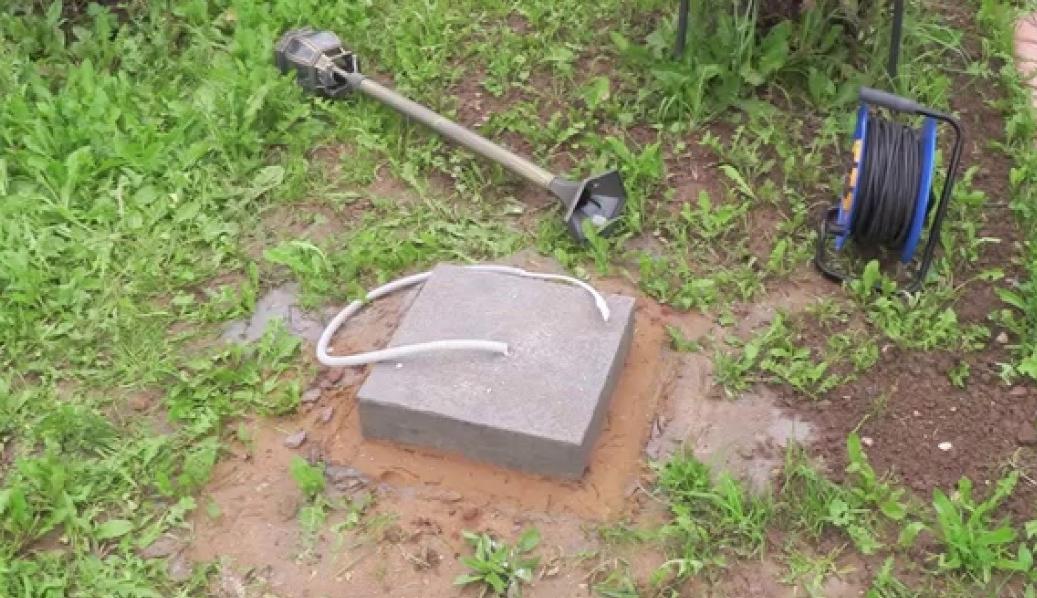
If using self-contained solar-powered lightsYou don't have to run a cable and prepare a design. They are simply plugged into the ground in the right places and start working immediately.. To extend service life, you should remove the equipment for the winter indoors.
Install lighting in the yard of a private home is not difficult, if you understand the main varieties, choose fixtures and make a detailed project. It is necessary to think in advance about what method of inclusion will be suitable, and when carrying out the work to pay the main attention to safety and reliable protection of connections.

